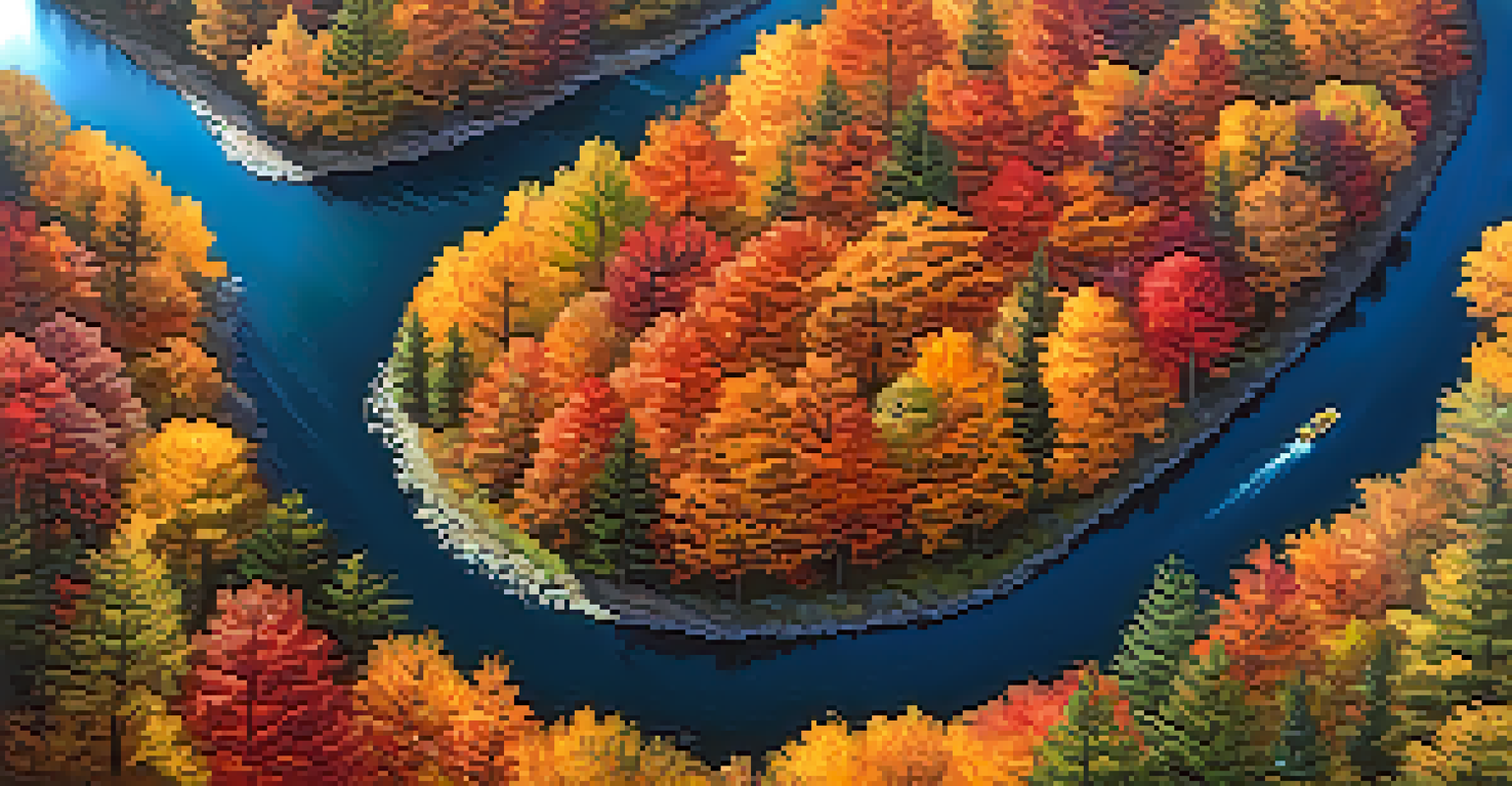How Music Documentaries Raise Awareness About Nature

The Power of Music in Environmental Storytelling
Music has a unique ability to evoke emotions and connect people. When combined with visuals of nature, it creates a powerful narrative that resonates deeply with audiences. Documentaries that feature music often amplify the message of conservation, making it more relatable and urgent.
Music can change the world because it can change people.
For instance, 'Chasing Ice' uses a haunting soundtrack to enhance the visual impact of melting glaciers. This emotional pull encourages viewers to not only appreciate the beauty of nature but to recognize its fragility. The right music can turn a simple documentary into an unforgettable experience that lingers in the mind long after the credits roll.
In this way, music serves as a bridge between the viewer and the environmental message, transforming statistics and facts into a compelling story that inspires action.
Highlighting Environmental Issues Through Musical Narratives
Many music documentaries focus on specific environmental issues, such as deforestation or ocean pollution. These films often use songs that reflect the struggles faced by nature, creating a sense of urgency. By doing so, they draw attention to problems that might otherwise go unnoticed.

Take 'Before the Flood,' for example. This documentary features a soundtrack that mirrors the film's themes of urgency and hope, showcasing how music can elevate the message. As viewers become more engaged, they are more likely to take action toward addressing these pressing issues.
Music Enhances Environmental Narratives
The combination of music and visuals in documentaries creates powerful emotional connections, making environmental messages more relatable and urgent.
Through these narratives, music documentaries not only educate but also motivate viewers to become advocates for the planet.
Creating Emotional Connections with Nature
Emotional connections are key to fostering a love for the environment. Music documentaries often evoke feelings of nostalgia, wonder, or even sadness, which can lead to a deeper appreciation for nature. When viewers feel emotionally invested, they are more likely to change their behaviors in support of conservation efforts.
The earth has music for those who listen.
For example, 'Our Planet' combines stunning visuals with a stirring score to showcase Earth's beauty and diversity. This emotional experience can inspire viewers to protect the very habitats they come to love through the film. It’s as if the music becomes a call to arms, urging people to take a stand for the environment.
In essence, these documentaries remind us that nature is not just a backdrop but a living entity worthy of our care and respect.
Promoting Conservation Through Inspiring Soundtracks
An inspiring soundtrack can serve as a rallying cry for conservation efforts. Music documentaries often feature artists who are passionate about environmental issues, using their platforms to raise awareness. This collaboration can amplify the message, reaching wider audiences and sparking discussions.
For instance, in 'The True Cost,' music from socially conscious artists highlights the impacts of fast fashion on the environment. By aligning the message with impactful music, the film encourages viewers to think critically about their consumer choices. This approach helps to create a community of like-minded individuals who are committed to making sustainable choices.
Cultural Connections to Nature
Music documentaries showcase diverse cultures' relationships with nature, emphasizing the importance of preserving both musical traditions and the environment.
Thus, the fusion of music and documentary storytelling becomes a vital tool for promoting conservation and inspiring action.
Showcasing Diverse Cultures and Their Relationship with Nature
Music documentaries often explore the relationship between different cultures and their natural environments. By showcasing diverse musical traditions, these films highlight how various communities interact with and depend on nature. This representation fosters a sense of global connection and understanding.
For example, 'Rumble: The Indians Who Rocked the World' showcases Native American musicians and their deep ties to the land. By linking culture with environmental stewardship, the documentary emphasizes the importance of preserving both music and nature. This narrative encourages viewers to appreciate and respect the diverse ways people engage with their environment.
Ultimately, these films remind us that our planet's beauty is enriched by its cultural diversity.
Inspiring Action and Advocacy Through Music
Many music documentaries go beyond awareness and encourage viewers to take action. They often include calls to action, urging audiences to support specific environmental initiatives or organizations. This proactive approach fosters a sense of empowerment among viewers, showing them that they can make a difference.
For instance, 'The 11th Hour' not only presents the challenges facing our planet but also offers solutions, accompanied by a compelling soundtrack. By providing actionable steps, the documentary inspires viewers to join the fight against climate change. This blend of information and inspiration can mobilize communities to advocate for environmental policies.
Inspiring Action for Conservation
By including calls to action and providing solutions, music documentaries empower viewers to engage in environmental advocacy and make a difference.
In this way, music documentaries become powerful tools for grassroots movements and collective action.
The Future of Music Documentaries in Environmental Advocacy
As awareness of environmental issues continues to grow, the role of music documentaries in advocacy is becoming increasingly important. The fusion of music and storytelling offers a unique way to engage audiences and spark conversations. Moving forward, we can expect more filmmakers to harness this powerful combination to inspire change.
Emerging technologies, like virtual reality, are also opening new avenues for music documentaries to immerse viewers in the beauty of nature. This innovative approach can deepen emotional connections and raise awareness in unprecedented ways. As filmmakers explore these possibilities, the impact of music documentaries on environmental advocacy will only continue to expand.

Ultimately, the future looks bright for this genre, as it remains a crucial voice in the ongoing conversation about protecting our planet.